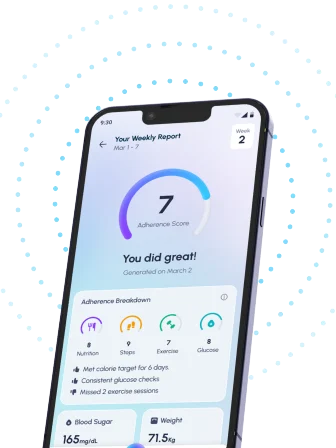Table of Contents
- Understanding Sclerosing Mesenteritis: A Comprehensive Guide
- Sclerosing Mesenteritis Symptoms: Diagnosis and Treatment
- What Causes Sclerosing Mesenteritis? Risk Factors and Prevention
- Living With Sclerosing Mesenteritis: Long-Term Management and Support
- Sclerosing Mesenteritis vs. Other Abdominal Conditions: Key Differences
- Frequently Asked Questions
- References
Have you ever experienced persistent abdominal pain, unexplained weight loss, or changes in bowel habits? These could be signs of something more serious, like sclerosing mesenteritis. While rare, understanding sclerosing mesenteritis: symptoms, causes, and what to expect is crucial for early diagnosis and effective management. This condition, characterized by inflammation and thickening of the mesentery (the membrane supporting your intestines), can significantly impact your quality of life. In this blog post, we’ll explore the key aspects of this often-misunderstood disease, empowering you with knowledge to better understand your health.
Understanding Sclerosing Mesenteritis: A Comprehensive Guide
While diabetes significantly impacts many, causing complications like foot ulcers—affecting nearly 15% of diabetics globally, leading to high amputation risks—this guide focuses on a different, yet equally serious, condition: sclerosing mesenteritis. This rare disease affects the mesentery, the membrane that holds your intestines in place, causing inflammation and thickening. Understanding its symptoms, causes, and potential progression is crucial for timely diagnosis and management, especially in the context of Indian and tropical climates where access to specialist care may be limited.
Symptoms of Sclerosing Mesenteritis
Symptoms can be varied and often mimic other gastrointestinal issues, making diagnosis challenging. They can include abdominal pain, often described as cramping or intermittent, nausea, vomiting, and weight loss. In some cases, a palpable abdominal mass may be felt. It’s crucial to consult a doctor if you experience persistent abdominal discomfort, especially if accompanied by other symptoms. Early diagnosis is key to successful treatment.
Causes and Risk Factors
The exact cause of sclerosing mesenteritis remains unknown. However, it’s believed to be linked to inflammation and possibly autoimmune responses. While no specific risk factors are definitively established, some studies suggest a possible association with certain infections or autoimmune disorders. Given the prevalence of infections in tropical climates, it’s imperative to maintain good hygiene and seek medical attention for any persistent infections. This is especially important considering the challenges in managing other inflammatory bowel conditions, as highlighted in our guide on How to Treat Inflammatory Bowel Disease.
What to Expect: Diagnosis and Treatment
Diagnosis often involves imaging techniques like CT scans and MRI scans to visualize the thickened mesentery. Treatment varies depending on the severity of the disease. Some cases resolve spontaneously, while others might require medication to manage inflammation or, in severe cases, surgical intervention. In the Indian subcontinent and other tropical regions, access to advanced imaging and surgical care can be a challenge; therefore, proactive healthcare engagement is crucial. Regular check-ups and open communication with your doctor are key to managing this condition effectively. Early detection and appropriate medical care are vital for improving outcomes. Understanding the complexities of gastrointestinal issues is key, and for those dealing with similar issues like ulcerative colitis, How to Stop Ulcerative Colitis Bleeding: Effective Strategies for Relief may offer valuable insights.
Sclerosing Mesenteritis Symptoms: Diagnosis and Treatment
Understanding the Symptoms
Sclerosing mesenteritis, a rare inflammatory condition affecting the mesentery (the tissue connecting the intestines to the abdominal wall), presents diverse symptoms. These can often mimic other gastrointestinal issues, making diagnosis challenging, particularly in resource-constrained settings common in many tropical countries, including India. Symptoms can range from vague abdominal pain and discomfort to more severe manifestations like nausea, vomiting, and weight loss. In some cases, a palpable abdominal mass may be detected. The insidious onset and variable presentation often contribute to delayed diagnosis. Early recognition is crucial for optimal management.
Diagnosis and Challenges
Diagnosis relies heavily on imaging techniques such as CT scans and MRI, which help visualize the characteristic fatty deposits and inflammation in the mesentery. However, access to advanced imaging can be limited, especially in rural areas of India and other tropical regions. Blood tests are often nonspecific, further adding to the diagnostic hurdles. Differential diagnosis is essential, ruling out conditions like lymphoma, abdominal tuberculosis, and other inflammatory diseases. Given the overlap in symptoms with more common ailments, a high index of suspicion is needed, particularly in areas with high incidences of other gastrointestinal diseases.
Treatment Approaches
Treatment for sclerosing mesenteritis is tailored to the severity of symptoms. Many cases resolve spontaneously or with conservative management, including pain relief and dietary adjustments. However, in cases of significant abdominal pain, bowel obstruction, or complications, surgical intervention may be required. Access to specialized surgical care is a key factor influencing outcomes, particularly in regions with limited healthcare infrastructure. While India faces a significant burden of diseases like gestational diabetes (approximately 2.5 million cases yearly), effective management of rarer conditions like sclerosing mesenteritis also requires attention to improve healthcare access and awareness. The symptoms can sometimes overlap with those of Acute Pancreatitis, highlighting the importance of accurate diagnosis.
Seeking Medical Attention in India and Tropical Countries
If you experience persistent abdominal pain, changes in bowel habits, or unexplained weight loss, it is crucial to seek medical attention promptly. Consult a gastroenterologist or surgeon for proper evaluation and management. Early diagnosis and access to appropriate healthcare significantly improve the prognosis for sclerosing mesenteritis in India and other tropical countries. Understanding the various symptoms is key, and for more information on abdominal pain related to the pancreas, you might find 10 Pancreatitis Symptoms: What You Need to Know helpful.
What Causes Sclerosing Mesenteritis? Risk Factors and Prevention
Understanding the Mystery
Sclerosing mesenteritis, a rare inflammatory condition affecting the mesentery (the tissue supporting the intestines), remains somewhat enigmatic in terms of its precise cause. While a definitive trigger isn’t identified, several factors are linked to increased risk. Genetic predisposition is suspected, hinting at a possible hereditary component. Certain underlying conditions, including autoimmune disorders and infections, are also considered potential contributors. The inflammatory process itself involves thickening and hardening of the mesenteric fat, often leading to abdominal pain and discomfort.
Risk Factors in Indian and Tropical Contexts
In regions like India and other tropical countries, specific risk factors may play a more significant role. While research is limited, considering the prevalence of certain conditions is crucial. For instance, chronic infections, prevalent in some areas, could potentially contribute to the development of sclerosing mesenteritis. Furthermore, lifestyle factors such as diet and nutrition can indirectly influence inflammatory processes. While not directly causal, these indirect factors warrant consideration. Similar to how diabetes increases the risk of kidney disease, with nearly 30% developing diabetic nephropathy, other underlying conditions could heighten the risk of sclerosing mesenteritis. Understanding the causes of other inflammatory conditions, such as in What Causes Inflammatory Bowel Disease (IBD)?, may offer insights into sclerosing mesenteritis.
Prevention and Management
Currently, there’s no known way to definitively prevent sclerosing mesenteritis. However, maintaining a healthy lifestyle, including a balanced diet and regular exercise, can contribute to overall well-being and potentially minimize the risk of developing inflammatory conditions. Early diagnosis and appropriate medical management are essential for controlling symptoms and preventing complications. Consulting a gastroenterologist is crucial if you experience persistent abdominal pain or other symptoms. Regular check-ups are recommended, particularly for individuals with a family history of autoimmune disorders or other relevant medical conditions. It’s important to note that while the causes differ, understanding the connection between conditions like meningitis and other diseases, as explored in Can Meningitis Cause Diabetes?, highlights the complexity of inflammatory processes in the body.
Living With Sclerosing Mesenteritis: Long-Term Management and Support
Managing Symptoms and Complications
Living with sclerosing mesenteritis requires a long-term commitment to managing symptoms and potential complications. Pain management is crucial, and this often involves a multi-faceted approach including medication, dietary adjustments, and potentially physical therapy. For some individuals, the pain associated with sclerosing mesenteritis can be debilitating. It’s important to remember that diabetic neuropathy, affecting 30-50% of patients with certain conditions, can exacerbate pain and reduce mobility, highlighting the need for comprehensive care. Regular check-ups with your gastroenterologist are essential for monitoring disease progression and adjusting treatment plans as needed. In India and tropical countries, access to specialized care might vary, so proactive engagement with your healthcare provider is key.
Seeking Support and Resources
Finding reliable support networks is vital for navigating the challenges of living with a chronic condition like sclerosing mesenteritis. Connecting with support groups, either online or in your local community (where available), can provide invaluable emotional support and practical advice from others facing similar experiences. Open communication with family and friends is also crucial for ensuring you receive the care and understanding you need. In many Indian and tropical regions, family support plays a significant role in healthcare management, so leveraging this network can be particularly beneficial. Remember to actively participate in your healthcare decisions and advocate for yourself to ensure you receive the best possible care and support. Explore online resources and local support networks dedicated to digestive health to find relevant information and community connection. Understanding the long-term outlook is also important, and while this condition is different, learning about Life Expectancy After Acute Pancreatitis can offer some perspective on managing chronic illness. The experience of managing chronic digestive issues can be similar across conditions, and information about managing another condition, like What is the Best Medicine for Ulcerative Colitis?, may offer additional insights into treatment options and coping strategies.
Sclerosing Mesenteritis vs. Other Abdominal Conditions: Key Differences
Differentiating Sclerosing Mesenteritis
Differentiating sclerosing mesenteritis from other abdominal conditions can be challenging, requiring a thorough medical evaluation. Its symptoms, often vague and non-specific like abdominal pain and discomfort, mimic those of many other digestive issues prevalent in Indian and tropical countries. Conditions like Crohn’s disease, tuberculosis, and even certain types of cancers can present with similar symptoms, making accurate diagnosis crucial. Imaging techniques such as CT scans and MRIs are essential for visualizing the characteristic fat thickening in the mesentery, a key feature of sclerosing mesenteritis.
Key Distinguishing Factors
One significant difference lies in the inflammatory process. While sclerosing mesenteritis involves a specific inflammatory response leading to fibrosis, other conditions may exhibit different patterns of inflammation. For instance, Crohn’s disease shows a more transmural inflammatory pattern involving the entire bowel wall. Similarly, tuberculosis might present with granulomatous inflammation. The location of the affected area also provides clues. Sclerosing mesenteritis typically affects the mesentery, while other conditions might manifest in various parts of the gastrointestinal tract. A detailed medical history, including family history of similar conditions, and physical examination are vital in narrowing down the possibilities. Understanding the differences between various digestive conditions, such as those explained in What is the Difference Between Hemorrhoids and Anal Fissures?, can help illustrate the complexity involved in diagnosis.
Seeking Expert Advice
Given the overlapping symptoms, self-diagnosis is strongly discouraged. Consulting a gastroenterologist or a specialist experienced in managing digestive disorders is paramount. Early and accurate diagnosis is critical for appropriate management, improving patient outcomes and quality of life. In tropical regions where certain infectious diseases are more prevalent, a thorough differential diagnosis considering these factors is particularly important. Prompt medical attention ensures that you receive the correct treatment and prevent potential complications. For more information on other digestive issues, you might find What are the Gastroesophageal Reflux Disease Symptoms? helpful in understanding the breadth of conditions that can affect the digestive system.
Frequently Asked Questions on Understanding Sclerosing Mesenteritis
Q1. What is sclerosing mesenteritis?
Sclerosing mesenteritis is a rare inflammatory disease affecting the mesentery, the tissue that supports your intestines. It causes symptoms like abdominal pain, nausea, vomiting, and weight loss.
Q2. How is sclerosing mesenteritis diagnosed?
Diagnosis can be challenging because the symptoms are similar to other digestive problems. Doctors often use CT or MRI scans to confirm the diagnosis.
Q3. What causes sclerosing mesenteritis?
The exact cause isn’t known, but it’s likely linked to inflammation and autoimmune responses. Possible associations with infections or autoimmune disorders have also been suggested, and it may be more common in tropical climates.
Q4. How is sclerosing mesenteritis treated?
Treatment depends on the severity. Some cases resolve on their own, while others may require medication or surgery to manage inflammation or complications. Access to advanced imaging and surgical care is very important.
Q5. What is the importance of early diagnosis and healthcare engagement for sclerosing mesenteritis?
Early diagnosis is key to better outcomes. Proactive healthcare engagement helps ensure timely treatment and management of the condition, especially given the difficulty in diagnosis.
References
- Diabetes Mellitus: Understanding the Disease, Its Diagnosis, and Management Strategies in Present Scenario: https://www.ajol.info/index.php/ajbr/article/view/283152/266731
- How patients make sense of a diabetes diagnosis: An application of Weick’s model of organizing: https://www.diabetesresearchclinicalpractice.com/article/S0168-8227(20)30367-3/pdf




